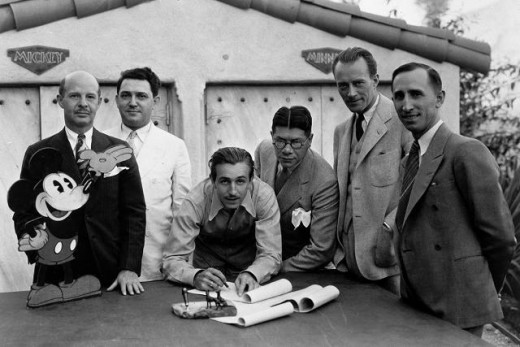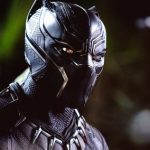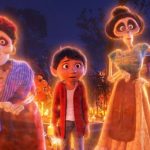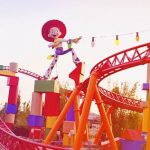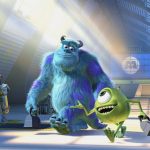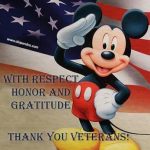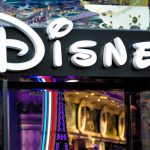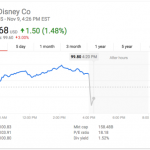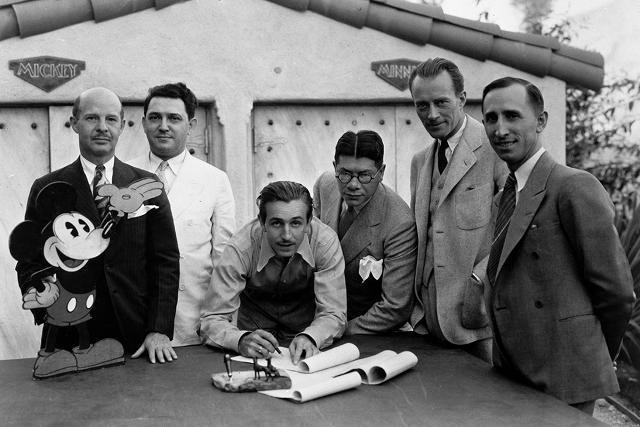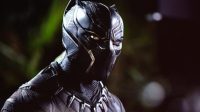From Mickey To Mowgli: Who was the true Walt Disney?
The Walt Disney firm gave PBS’s American experience the keys to the Magic Kingdom and promised to not intrude. this is what happened.
September 14, 2015
When PBS’s American expertise got down to file Walt Disney’s life three years ago, it anticipated a fool’s errand.
“I truly concept it was going to be an not possible task, as a result of it’s no secret that the company Walt created may be very controlling of its brand,” says AE executive producer Mark Samels. “For Disney, there was once the expectation of editorial input. I stated, ‘well, it can be gonna be very simple: you’re going to get to see the express when the American public does.’ and i totally anticipated it could be over at that point.”
Then a miracle happened: Disney opened the archives.
the end result is the four-hour documentary, Walt Disney, airing over two nights, September 14 and 15, on PBS. The pictures depicts a fancy man, each liked and feared, in his personal struggles: looking mass acceptance whereas pushing artistic boundaries, trying to control a burgeoning empire, using his body of workers while trying a place of job household.
“the actual problem to this venture was that Walt Disney is so mythic, and people suppose they be aware of him, but in reality don’t,” says Walt Disney’s Emmy Award-profitable producer/director Sarah Colt. “I relied very much on the scholarship that came sooner than—Neil Gabler’s biography and different books, and archival research—and tried to remember him as a someone with many layers of complexity. confidently, as soon as you will have watched four hours, you really see him as a real individual.

The Terrifying Visionary
“one of the most issues the film gets proper is that Walt Disney does regulate everything”—a inventive drive who goes beyond a studio head to somebody actually responsible for these animations and other movies, says Gabler, who wrote the award-successful bestseller, Walt Disney: The Triumph of the American creativeness.
“he’s an instrumentalist, similar to Steve Jobs,” he says. “so long as you’re instrumental to what he wants, things are positive. if you find yourself now not ready to give him what he wants, there is no sentimentality. ‘lifeless wooden. do away with him. I handiest want people who can fulfill my imaginative and prescient.’ He was once a terrifying father (figure) at work. The Walt Disney Studio operated like a cult, and Walt was once the head of the cult, and everybody [there] drank the Kool aid, as a minimum within the ’30s and ’40s. within the ’50s and ’60s, it used to be a bit of completely different, although they were nonetheless petrified of him.”
individuals who towed the line have been regarded a protracted—and dependable—domestic. “When his animators went on strike in the early 1940s, it was once a betrayal on a stage that was lifestyles changing,” says Colt. “So for him, this family then turns on itself.”
Academy Award-profitable composer Richard Sherman—who, with his brother Robert, crafted songs for Mary Poppins, among others—discovered a mellower Disney once they started out working for him in 1960.

“That terrifying leader within the film used to be the early Walt preventing to get to the highest. however he was on the top in 1960,” he says. “He had mastered the entire animation issues, he had created Disneyland towards all and sundry’s higher judgment. here, he failed to must fight. He treated us like we have been his boys. We obtained him within the golden years.
“you have to needless to say his love for folk was very actual,” provides Sherman. “He in point of fact really beloved youngsters, he loved animals. yes, he used to be pushed. He was once a person with fireplace, who had to reach and climb mountains, and was once at all times in search of a new mountain to climb. With all that, he nonetheless was once an ideal father to his kids, excellent husband, and great soul. but the primary factor was he used to be pushed with the aid of doing excellent issues.”

the associated fee of empire
in the Nineteen Fifties, Walt Disney studios changed into too corporatized for Disney’s entrepreneurial and creative nature. So he left to type WED, which stood for Walter Elias Disney, the precursor to what is now Disney Imagineering. There, he created the now iconic sights: Small World, Carousel of growth, Tiki Room, audio-animatronics.
“The essence that Sarah attracts out within the film is the fee of empire,” says Samels. “He places down his brush. he’s now accountable for something. He does not have the personalized touch with anymore.”
provides Gabler, “the company obtained so giant that Walt Disney failed to need to be part of it anymore. It existed to make these animations, after which reaches a point where the animations existed to maintain the company running. That’s when Walt leaves, makes Disneyland, and forms WED. it’s like the early days. it’s fun again. Like when he used to be doing Mickey Mouse, as a result of he doesn’t wish to be part of a company construction.”
“What made Disneyland different was once bringing a story to an leisure carnival,” says animator/producer Don Hahn, who produced The Lion King and magnificence and the Beast. “So, whilst you go to that hub in front of the citadel and switch left into Adventureland, it’s the identical of a go dissolve. You go over water, a bridge, through some jungle, and there’s the Tiki Room, and you might be in this different location. So he had a sense of narrative even in that reside leisure venue.”

The artist vs the emblem
Disney’s battles extended beyond keep an eye on and mechanics. There used to be the will to be taken significantly as an artist by way of a public that pegged him as folk hero.
Walt Disney’s most private movies—Snow White, Pinocchio, Bambi, Dumbo, Fantasia—got here out all through 1937 to 1942 and had been courageous creative picks, but now not all hits. As time passed and the movies needed to fortify different initiatives, such trailblazing turned into more and more troublesome. Fantasia, specifically was a cultural turning point, as a result of it so countered his public image as a naïve folk artist.
“They had been trying to exhibit that animation used to be that you can imagine for doing the rest; that it wasn’t solely a children’s medium,” says Hahn. “And to an ordinary level, we battle that still today. Animation can truly inform a lot of stories.”
“Walt was once very frequently always considered as an ordinary guy producing leisure for the masses, and Fantasia is nearly too much,” says university of Virginia artwork historian Carmenita Higginbotham. “Critics saw him as a poser, any person who was once seeking to convey fine artwork or culture to the plenty, and it couldn’t be accomplished. He should stick with what he knows. So it was once a vital turning point.”
provides Gabler: “That was the beginning of the criticism of Walt Disney that lasts even to at the present time. whilst you look at a few of his correspondence, he says in a note to Julie Andrews, ‘they are going to by no means give me an Oscar for Mary Poppins.’ The film also depicts the sense that Walt is all the time combating. You bring to mind him as being warm and cuddly and the guts of america, but he is at all times preventing.”
within the early 60s, Disney put his private stamp on Mary Poppins and The Jungle book, but would die in 1966, between their releases. “That used to be the outdated Walt Disney coming back once more,” says Sherman. “He came again in these years, and then he left us.”
provides Colt: “My feel of Walt Disney was that he by no means coasted and was once pushed except the day he died. in truth, on his deathbed, he used to be looking up on the ceiling and telling [his brother] Roy about his plans for Epcot at Disney World.”

The controversy
missing from the documentary is the stuff of city legend—Disney being cryogenically held—in addition to rumors of his being an anti-Semite and racist.
“there isn’t any evidence to point out that Disney had Nazi [sympathies],” says Colt. “that isn’t in accordance with any fact, so there’s no purpose to convey it up within the film. I unquestionably asked about Disney’s anti-Semitism and tried to search out any evidence, and again, there wasn’t evidence. It wasn’t relevant to this story of who Walt Disney used to be and what he did, and so that’s now not part of the film.”
“I wrote a e book known as An Empire of their very own: How the Jews Invented Hollywood, so if anybody goes to be sensitive to whether Walt Disney was anti-Semitic, it could be somebody like me,” says Gabler. “I’m additionally some of the few individuals who read each single piece of the Walt Disney papers, and saw no evidence, as opposed to informal anti-Semitism that virtually each gentile of that time would have had. there have been many reasons why he was regarded as an anti-Semite, expenses basically made through his enemies. i don’t think Walt was once a racist, but I do suppose he saw his theme park and flicks as being basically meant for almost all white audience.”
“He was a person of his time,” says Higginbotham. “he is excited about the broadest target market possible, and what he is aware to be best families and faces, and what he’s exposed to. It’s just a function of what it’s.”

The legacy
How do you keep the imaginative and prescient alive when the visionary is gone? Disney’s absence left his company’s future animators navigating the line between his aesthetics and spirit, whereas maintaining with altering social mores.
“I was at the studio in 1976, and it was like a “What would Walt do?” studio,” says Hahn. “You truly felt him in the hallways, and there used to be a era of individuals there who felt we needed to maintain that legacy going. however it ran the danger of changing into a museum.”
“It wasn’t unless we at last stated, ‘you know, the last guy who would ask “What would Walt do?” would be Walt Disney. So let’s start saying “What would we do? What must we categorical as artists living and respiration in this age?’” he provides. “It used to be Disney’s chance taking and reinventing himself that we started to seize. that is once we began making The Little Mermaid, beauty and the Beast, and The Lion King.
“That goes again to you being yourself and an artist to your personal generation,” Hahn continues. “Walt Disney actually captured his generation and we can handiest try to do the identical.”
For a take a look at how Disney develop into the first animation studio to carry existence-drawing courses, inspect this text.
quick company , learn Full Story
(94)

